La Specola, Florence. The most ancient scientific museum in the world
La Specola in Florence is my favorite museum ever. I love it not only because it’s in my city, but because it exhibits one of the most beautiful anatomical wax collections in the world. The works of florentine wax artists are not only renowned and exhibited throughout Italy, but are famous worldwide amongst the medical and scientific communities.
NOTE: La Specola Museum is currently closed due to a massive renovation.
The anatomical waxes of La Specola in Florence
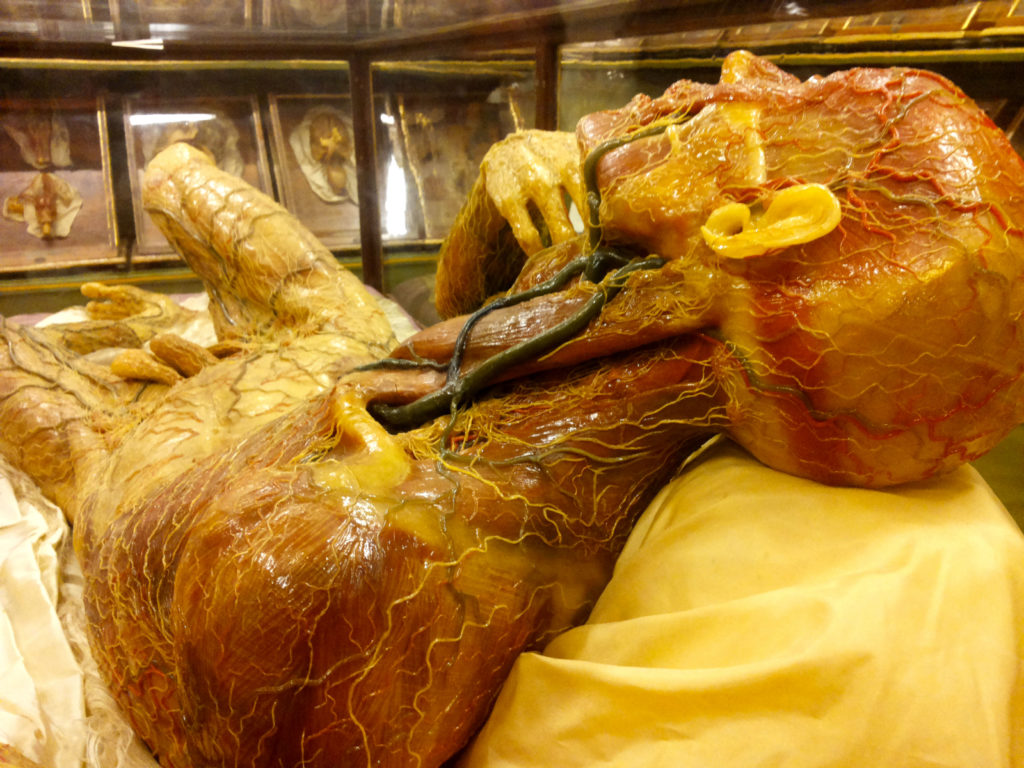
The collection of anatomical waxes was commissioned by Grand Duke Peter Leopold of Lorraine to assist the teaching of human anatomy. The collection includes the works of some of best wax artists of the 17th and 18th centuries such as Francesco Calenzuoli, Luigi Calamai and also Clemente Susini, who created the famous “Spellato” (the skinned one), its languid pose inspired by Michelangelo. Today, the wax anatomies are still displayed in their original caskets, which have drawings and explanation board to accompany the wax figures. There is an extraordinary union of both art and science in the remarkable level of quality and detail incorporated in the waxes. The figures have been reproduced with all the body tissues, textures, transparencies and colors in astonishing realism. I have seen many anatomical wax museum all over the world, including modern waxes made with the most cutting edge technologies, but these do not even compare to the quality of the waxes held in the La Specola museum of Florence.
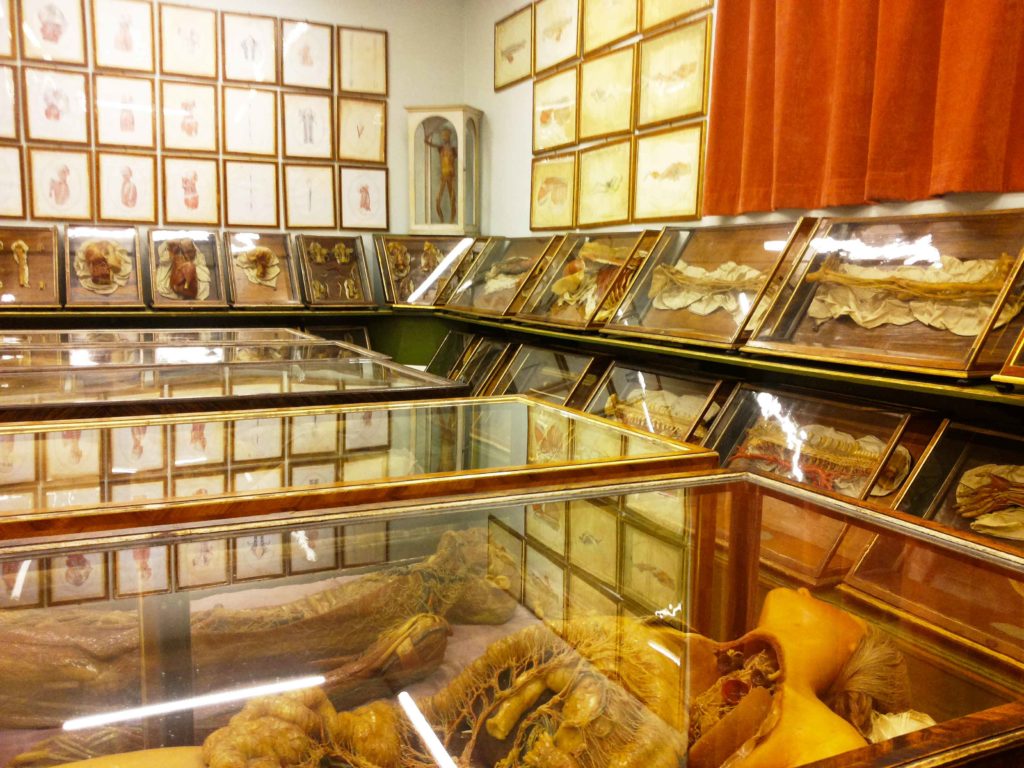
Other than the medical and scientific purposes behind the waxes, there is a very clear aesthetic element in their creation. The form and qualities of the waxes are a nod of reverence toward the artistic greats of Renaissance, drawing their influence from the likes of Donatello, Michelangelo, and Titian. It is as if walking through the Uffizi, in an ultra realistic reinterpretation with insight into human physiology, beautifully embodied in works such as Susini’s famous “Venerina” of La Specola.
The museum has recently displayed again Gaetano Zumbo’s anatomical waxes of the 16th century, which had to undergo several years of restoration after being damaged by a flood in1966. Zumbo’s waxes differ from the traditional ones of the florentine school: the artisti intent is decisively predominant, but are stille illustrative of human anatomy and medical physiology. Among the most important are three anatomical theatricals which dramatically show the effect of plague, syphilis and decomposition of the bodies. There is a strong emotional component here, carried further in his wax of a human head modeled on a real skull.
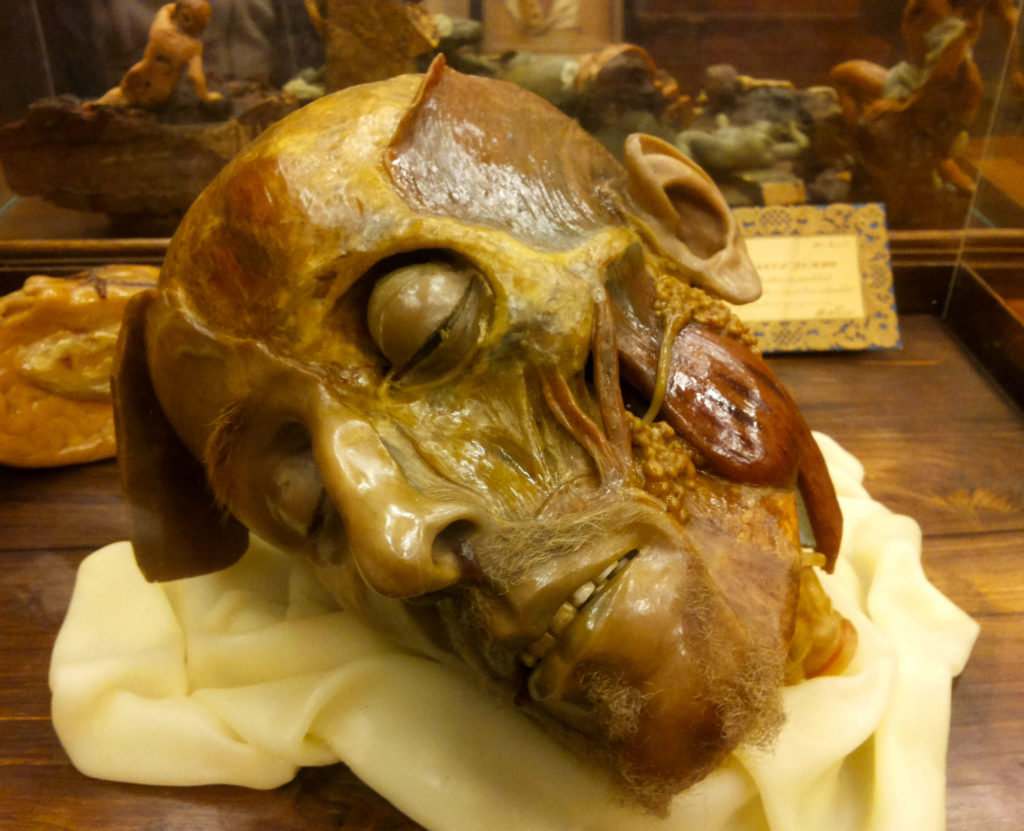
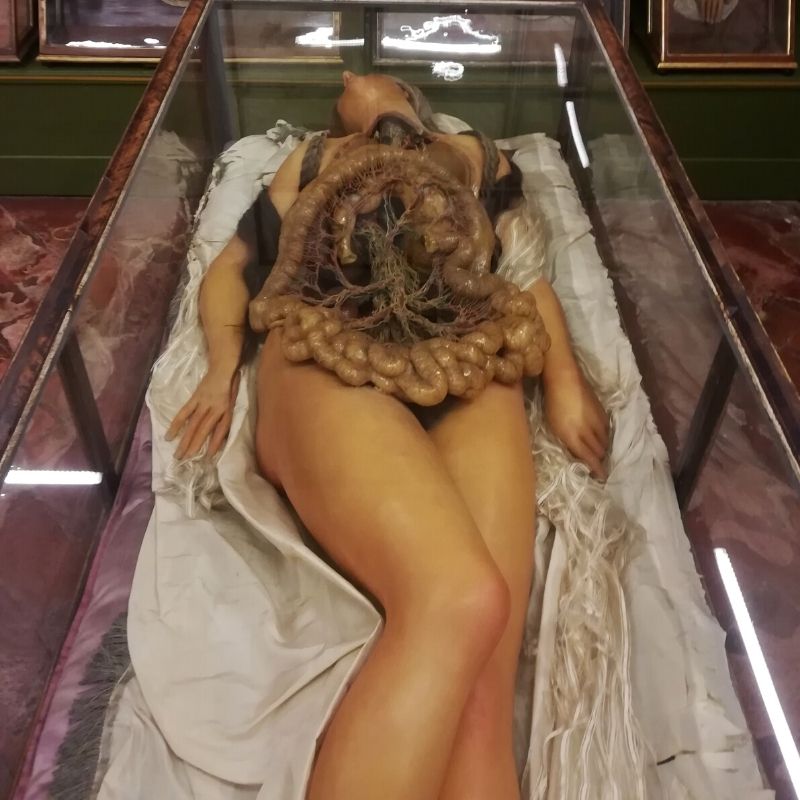
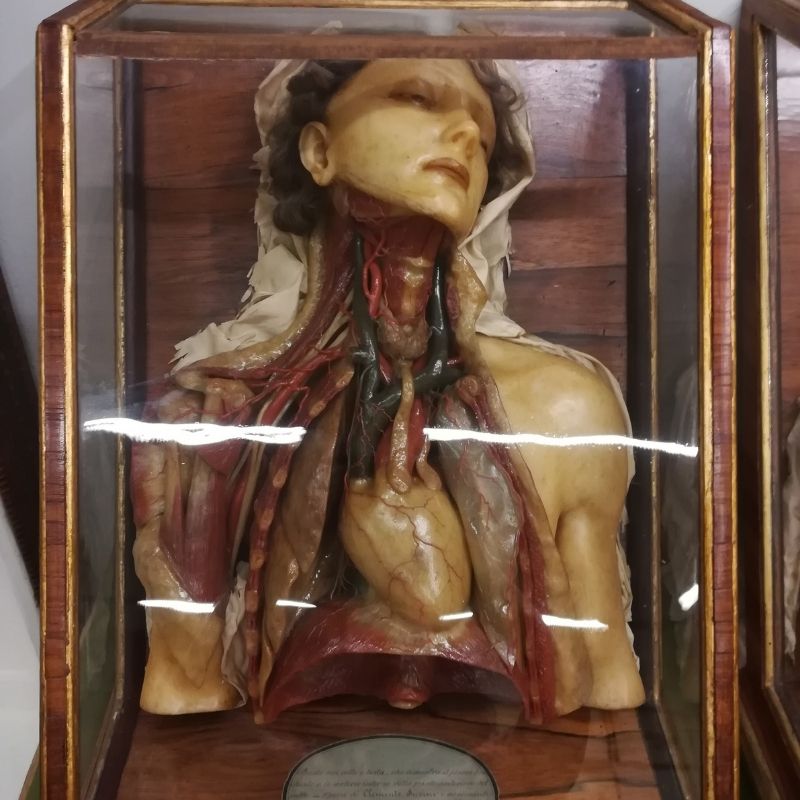
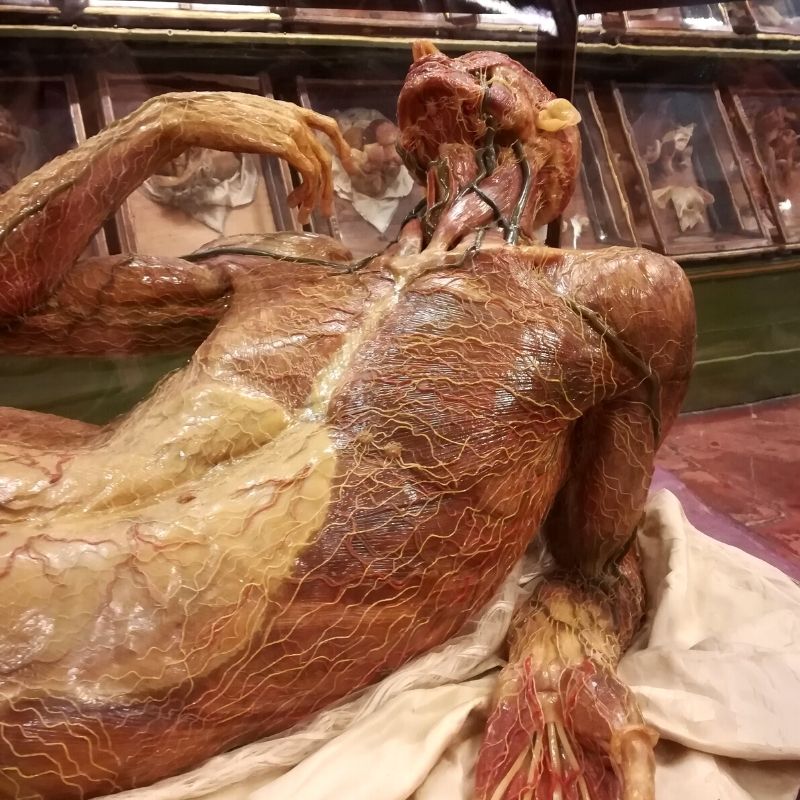
The zoological collection of the museum
The La Specola museum contains more than just anatomical waxes. Originally it was the world’s first science museum, initially dedicated to all physical and natural sciences. Today, many collections are house in other locations, resulting in the network of venues which comprise the Natural history Museum. The Specola now hosts the zoology section.
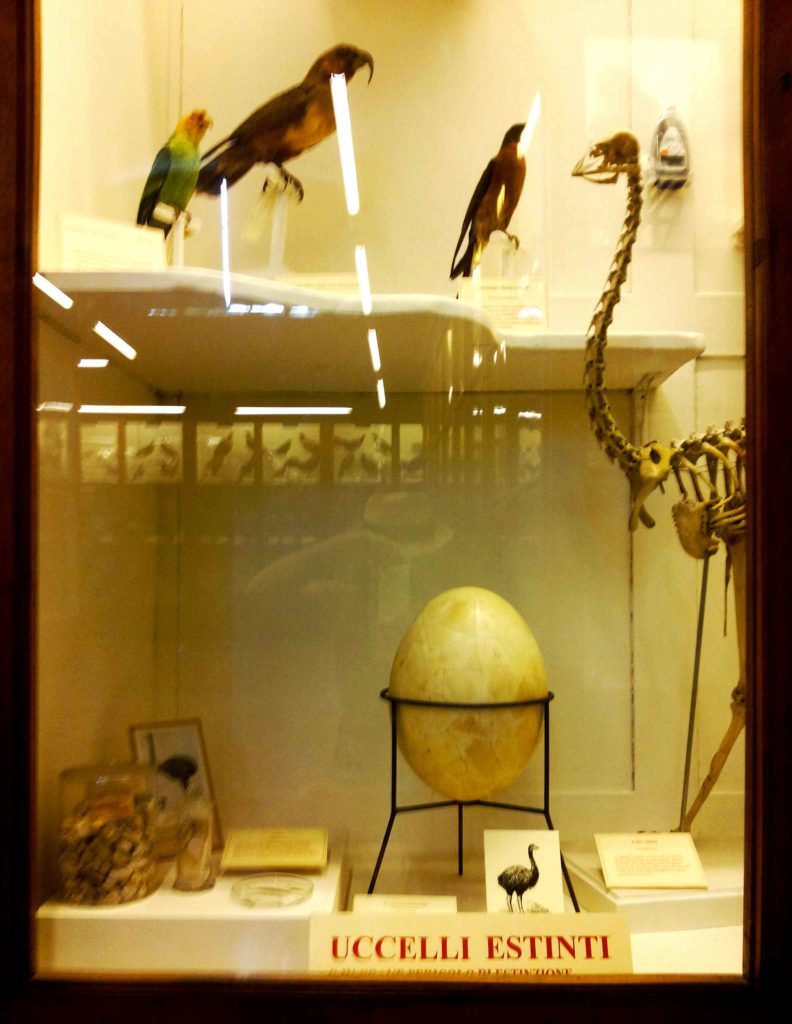
There are dozens and dozens of rooms with many animal taxidermies conserved in different ways: stuffed, dried, in formula, etc. The 700’s and 800’s saw the systematic documentation of all known species from sea molluscs to large mammals (thank you Linnaeus!). The La Specola exhibits around 5000 animals, but the actual number of species they house is more than 3 million. The collection on display includes even extinct animals, such as the Tasmanian Tiger (extinct circa 1930) and an egg of Moa (a large flightless bird endemic to New Zealand, extinct circa 1300 AD). Some might say that is unethical to showcase and marvel at dead animals, but one must put into context that 300 years ago, this was the only way for students and scientists to study the animal world. Today, the collection of La Specola are a dynamic and living testament to the story of study and science in the vast animal kingdom.
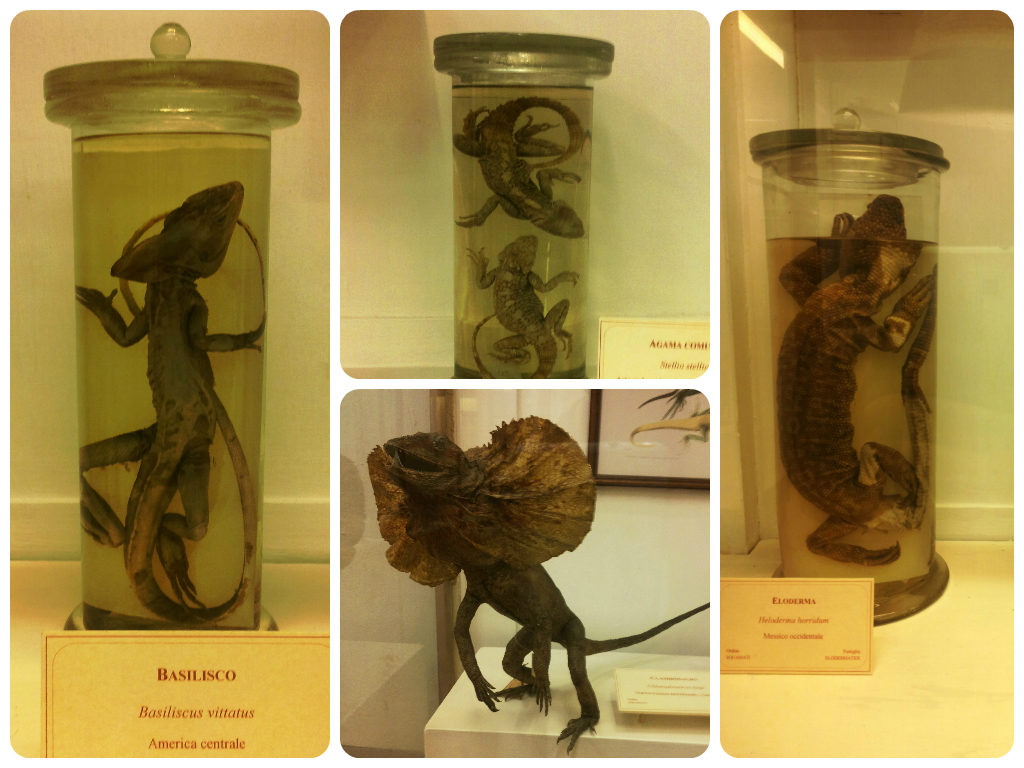
The Galileo tribune, the hall of skeletons and the astronomical tower
The museum is located on the second floor of the La Specola in Florence, although one should not miss paying a visit to the Galileo Tribune on the first floor. The tribune is usually open to the public and it’s dedicated to the religious adorations of Galileo and his discoveries in science, although religion is not relevant.
At the bottom of the nave there is a large statue of Galileo surrounded by medallions of his most important students, against a backdrop of frescoed walls detailing scenes from his life and other important florentine scientists. At one point, the museum also contained some of the instruments of this great tuscan scientist, although these are now housed in the Galileo Museum of history of science.
Other fascinating places include the Hall of Skeletons and the astronomical observation tower, called “il torrino”, which can be visited upon reservation and with accompaniment from museum staff. The cost of reservation is 30 euros, although I strongly recommend doing this at least once, as they are very special places and are certainly worth the effort.
The hall of skeletons showcases the skeletons of the animals exhibited in the zoology section, especially large mammals among which one can find rare specie and ancient specimens.

The astronomical tower is home to a huge telescope, ang gives a beautiful yet little known view over the rooftops of Florence. However, the real highlight is the opportunity to visit the amazing Stork room, with its solar clock indicating all the sing of the Zodiac.
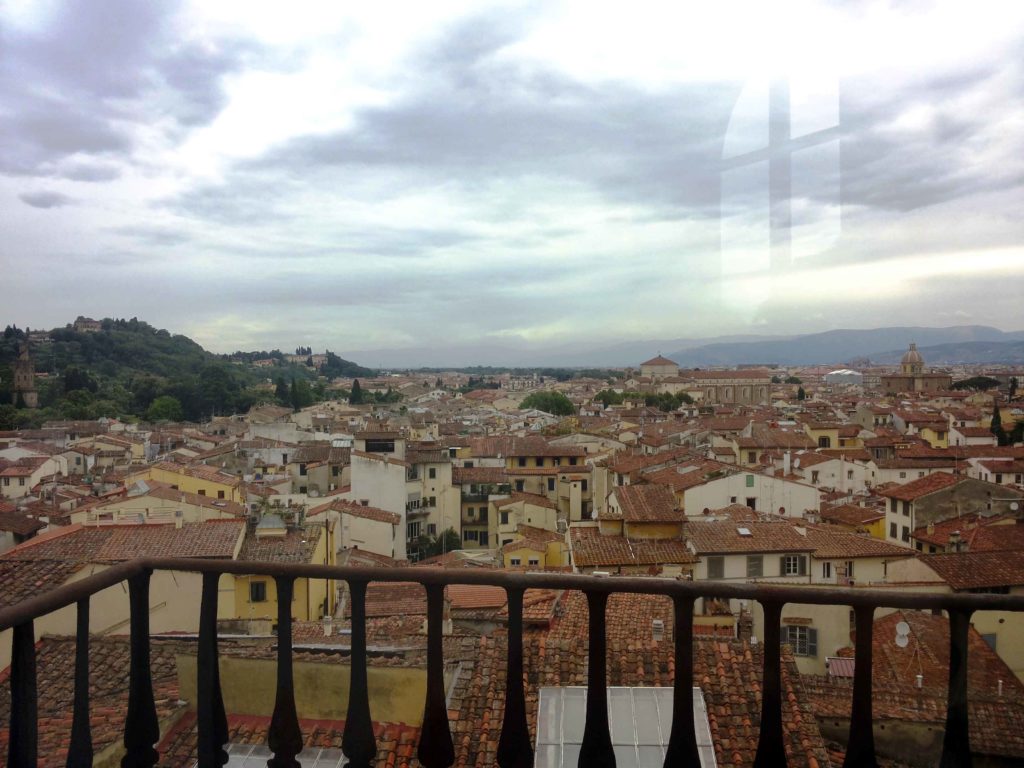
The La Specola in Florence is one of my favorite museums, and if you want to make a visit, I’m sure you will see why. It’s under appreciated, and not commonly visited by tourists. Many florentines have been here on a school excursion, but it’s a totally new and fantastic experience to rediscover this place as an adult.
For more information and timetables I refer you over the National Natural History Museum website, as times can often vary.
The stories behind some of the pieces are curious, interesting and sometimes incredible, and if you would like to know them all, I will happily accompany you on a guided visit as a tour guide of Florence. Just send me an email request using this form!
- Discover some other lesser known museums of Florence.